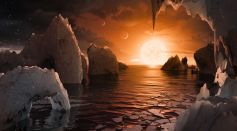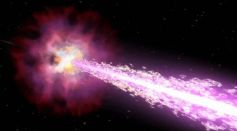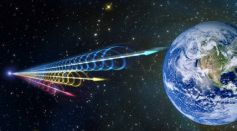Tags: Star

Winter Hexagon: Six Constellations Combine in the Sky This Week; How to See It?

Experts Found At Least Six Super-Earths Dancing Around a Star; What Makes It Special?

Experts Discovered a Weird, Hot Jupiter as It Passed Through a Star

NASA 's Hubble Space Telescope Shares Surprising Photo of Lost Galaxy

NASA Hubble Space Telescope Detect Chaotic Heart of Orion Nebula

Kepler Finds Triple-Star System With a Skewed Configuration

'Super-Earth' Orbiting One of Milky Way's Oldest Stars, Observed

Did ALMA Telescope Just See a Distant Colliding Galaxy Dying Out?
This Six-Planet System Is Orbiting In Almost Perfect Orbital Resonance

Radio Astronomers Close to Unusual Moment in Proxima Centauri; Did They Miss A Call?

3 Little-Known Facts About Neutrinos, aka, “The Ghost Particle”

Lack of Dark Matter Reveals That Galaxy NGC1052-DF4 Is Entering Death Spiral

Scientists Found Mysterious 'Fast Radio Burst' In the Milky Way for the First Time
Experts Found Earth-Sized Rogue Planet Floating in Milky Way
Giant Red Star Betelgeuse Is Smaller, Closer to Earth Than We Thought

Researchers Find Novel Method of Analyzing the Densest Star Systems
Exotic Peacocks of the Stellar World: A New Model for Colliding-Wind Binaries
New Study Suggests the Possibility of Life in Stars
Hubble Team Unveils Why Betelgeuse Unexpectedly Started Dimming

Scientists May Have Developed New Way to Detect 'Invisible' Black Holes
Most Popular

Relativity Time Dilation Explained: The Physics of Time and Why It Moves Differently in Space

How AI Is Used in Weather Prediction: Smarter Forecasting Through Machine Learning

How Lightning Science Reveals Why Charged Storms Are Rising with Global Warming Effects

De-Extinction vs. Conservation Science: Which Approach Protects Biodiversity Most Effectively?





